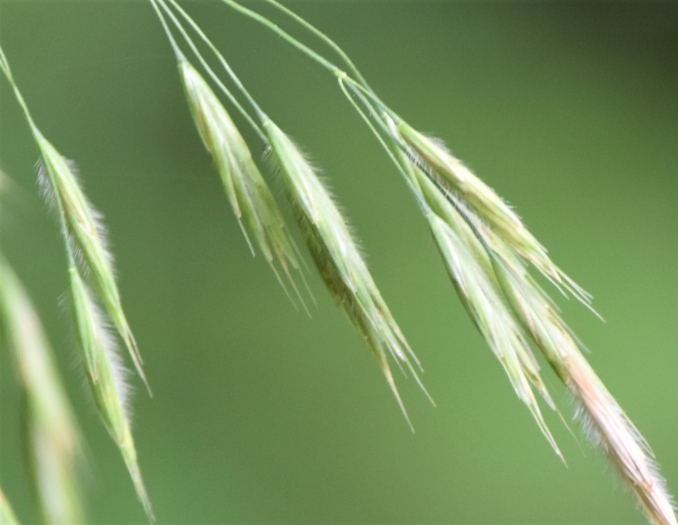Fringed Brome
(Bromus ciliatus)
Fringed Brome (Bromus ciliatus)
/
/

Eric Lamb
CC BY 4.0
Image By:
Eric Lamb
Recorded By:
Copyright:
CC BY 4.0
Copyright Notice:
Photo by: Eric Lamb | License Type: CC BY 4.0 | License URL: http://creativecommons.org/licenses/by/4.0/ | Rights Holder: Eric Lamb | Publisher: iNaturalist | Date Created: 2023-08-04T17:01:37-07:00 |

























Estimated Native Range
Summary
Bromus ciliatus, commonly known as Fringed Brome, is a perennial grass that is native to a wide range of habitats across North America, including open woodlands, meadows, grasslands, and the edges of temperate coniferous forests. It is often found in moist, well-drained soils and is particularly common in riparian zones, areas adjacent to streams and rivers. Fringed Brome typically grows up to 4 feet tall and is characterized by its long, narrow leaves and the distinctive fringed awns on its seed heads, which appear in late spring to early summer. The flowers are not particularly showy, but the seed heads can add a delicate, textured appearance to the landscape.
Fringed Brome is valued for its adaptability and is used for erosion control, habitat restoration, and as forage for grazing animals due to its palatability. It is shade-tolerant, making it suitable for understory plantings and woodland gardens. In cultivation, it requires minimal maintenance, thriving in full sun to part shade and preferring moist, fertile soils. While it is not commonly used in ornamental horticulture, it can be a useful component in native plant gardens and naturalized areas. Potential problems include susceptibility to rust and fungal diseases in humid conditions.CC BY-SA 4.0
Fringed Brome is valued for its adaptability and is used for erosion control, habitat restoration, and as forage for grazing animals due to its palatability. It is shade-tolerant, making it suitable for understory plantings and woodland gardens. In cultivation, it requires minimal maintenance, thriving in full sun to part shade and preferring moist, fertile soils. While it is not commonly used in ornamental horticulture, it can be a useful component in native plant gardens and naturalized areas. Potential problems include susceptibility to rust and fungal diseases in humid conditions.CC BY-SA 4.0
Plant Description
- Plant Type: Grass
- Height: 1.6-3.9 feet
- Width: 2-3 feet
- Growth Rate: Moderate
- Flower Color: N/A
- Flowering Season: Spring, Summer
- Leaf Retention: Deciduous
Growth Requirements
- Sun: Full Sun, Part Shade, Full Shade
- Water: Medium
- Drainage: Medium, Slow
Common Uses
Erosion Control, Low Maintenance
Natural Habitat
Native to a wide range of habitats across North America, including open woodlands, meadows, grasslands, and riparian zones
Other Names
Common Names: Fringed Brome, Fringe-topped Brome, Hairy Woodland Brome
Scientific Names: , Bromus ciliatus, Bromopsis canadensis, Bromopsis ciliata, Bromus canadensis, Bromus canadensis subsp. yezoensis, Bromus capillaris, Bromus capillaris, Bromus ciliaris, Bromus ciliatus f. denudatus
GBIF Accepted Name: